XBRACING is a spreadsheet program written in MS-Excel for the purpose of analyzing X-braced bents with tension-only systems. From 1-story up to 10-story bents may be analyzed. Specifically, given the bent width, the story heights, and the lateral story loads, all the member (segment) forces are determined, as well as the horizontal and vertical reactions at the supports, and the individual story drifts (horizontal deflections).
This program is a workbook consisting of eleven (11) worksheets, described as follows:
- Doc - Documentation sheet
- X(1) - Analysis of 1-story bent with tension-only X-bracing
- X(2) - Analysis of 2-story bent with tension-only X-bracing
- X(3) - Analysis of 3-story bent with tension-only X-bracing
- X(4) - Analysis of 4-story bent with tension-only X-bracing
- X(5) - Analysis of 5-story bent with tension-only X-bracing
- X(6) - Analysis of 6-story bent with tension-only X-bracing
- X(7) - Analysis of 7-story bent with tension-only X-bracing
- X(8) - Analysis of 8-story bent with tension-only X-bracing
- X(9) - Analysis of 9-story bent with tension-only X-bracing
- X(10) - Analysis of 10-story bent with tension-only X-bracing
Program Assumptions and Limitations:
1. This program assumes that the vertical bent is fully braced, between every story, utilizing a tension-only X-bracing system.
2. In a tension-only bracing system, one brace is assumed effective in tension while the other brace is assumed to buckle (in compression), requiring the tension brace to take all of the load.
3. This program uses the "Method of Virtual Work" to determine the horizontal deflections at each of the story levels. The horizontal deflection at a particular story level is determined by first applying a "dummy" unit load at that level. Then, the member forces from the unit load are determined. With the member forces due to the applied lateral loads already having been calculated, the horizontal deflection at that story level is:
Dn = S F*u*L/(A*E)
where:Dn = horizontal deflection at particular story level number considered (inches)
F = force in each member due to all applied lateral story loads (kips)
u = force in each member due to unit load applied at paricular story, 'n'
L = length of each member in bent (inches)
A = area of each member in bent (in.^2)
E = modulus of elasticity of members in bent, all assumed equal (ksi)
The horizontal deflections (story drifts) determined are for the joints at the left side of the bent, with all members (segments) assumed pinned at both ends.
* XBRACING download link provides freeware version of the software.
POLEFDN is a spreadsheet program written in MS-Excel for the purpose of analysis of a pole foundation assuming the use of a rigid round pier which is assumed free at the top and subjected to lateral and vertical loads.
Beam on Elastic Foundation Analysis
BOEF is a spreadsheet program written in MS-Excel for the purpose of analysis a finite length beam with free ends supported continuously on an elastic foundation.
Rectangular Spread Footing Analysis
FOOTINGS is a spreadsheet program written in MS-Excel for the purpose of analysis of rigid rectangular spread footings with up to 8 total piers, and for either uniaxial or biaxial resultant eccentricities.
Concrete Slab on Grade Analysis
GRDSLAB is a spreadsheet program written in MS-Excel for the purpose of analysis of concrete slabs on grade.
Weld Group Analysis per AISC 9th Ed.
WELDGRP is a spreadsheet program written in MS-Excel for the purpose of analysis of weld groups using either the ultimate strength method or the elastic method.
Submit a review about XBRACING software with your social media profile

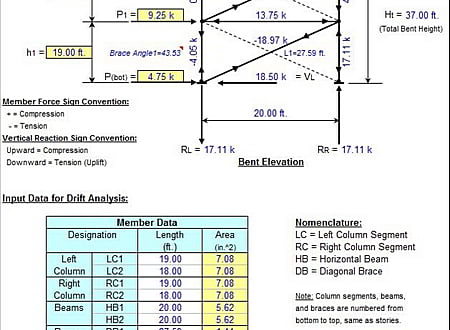
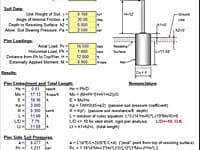
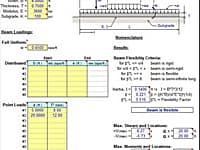
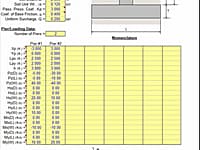
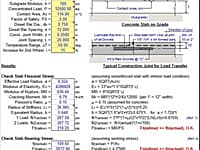
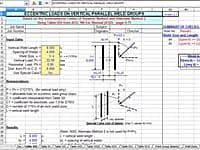
No comments yet. Be the first to comment.